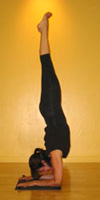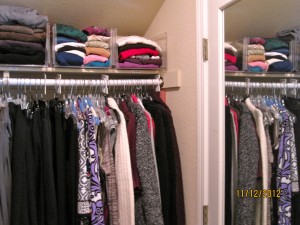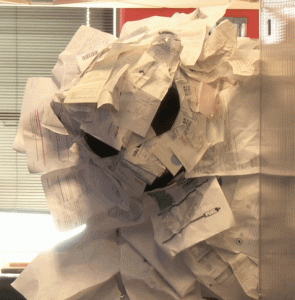How many times have you moved in your adult life? Five times? Ten times? More? 
Since moving into my first apartment at age 20, I’ve moved eight times including three times across the country, and each of those three with a cat. I’ve also helped many clients move; across town, across country and even across the ocean.
Each time I moved, I learned the hard way about how to better plan for the next move. I whittled this knowledge down to a list of 12 things you should know before you move and hopefully these tips will save you from learning the hard way too.
- Create a move timetable or check list: Brainstorm a list of everything you need to do. Work backwards from your move date to the present breaking down tasks from week to week. If you are moving with others ask them what you may have forgotten in your moving schedule and add it to the list.
- Pay to move what you want; not what you don’t: Sort and purge what you no longer want. Remember most long distance moving companies charge by the pound. Do you really want to pay to move your college text books… again?!
- Get a minimum of two in-home estimates: Not all movers are created equal. Although fees for long distance moves are based on weight, other fees for things like supplies, packing, extra stops and insurance vary from company to company. Look carefully at the estimate and always request a “not to exceed price.” For local moves, ask the company to do an onsite estimate based on whether you are packing yourself or paying them to pack. Don’t just go with the quoted hourly rate.
- Have professionals pack high value, fragile items: If you pack them yourself – you take the risk. If your movers pack it – they do. To save money, have them pack just your most fragile items such as heirloom China, vases, antiques and chandeliers.
- Insure your items at the highest rate you can afford: Long distance moving companies are required to charge a minimum insurance rate of .60 per pound. This means your heavy files are valued at the same rate as your fine crystal. Don’t take a chance! Insure for the full replacement value of your most valuable items (or check with your homeowner’s insurance provider to see what they cover).
- Move in the morning: Summertime is peak moving season. For this reason most moving companies book two, three and even four moves in a day. Don’t be sitting waiting for the movers at midnight. Request a first appointment or if possible delay your move until after the Summer ends.
- Invest in gently used boxes: Scrounging around for moving boxes at the supermarket is fine if you are moving a few items but inconvenient and time-consuming if you are moving an entire home. Search the web for used moving boxes and save a bundle on your supplies.
- Ask your real estate agent’s advice: If you are working with a real estate agent who is helping you sell your home or buy a new one, ask them for tips about moving. They are very often a wealth of knowledge and resources.
- Make a plan for your pets: Are you driving? Flying? Transporting your pets to another country? Consult with your vet first. Call the airline to inquire about restrictions for carrying pets on-board and find out about quarantine requirements for your pets traveling overseas.
- Get a floor plan of your new home if possible: Think ahead about where you want to place your furniture. Take pictures of the furniture in your old house so you can plan for where you want it in your new house. This will help save you time and money when you move into your new home. It may also keep you from over-stuffing your garage with all those pieces of furniture that won’t fit.
- Do a walk-through before you leave your old home: This is one of those tips I learned the hard way. Before moving, I forgot to remove a box of favorite books from my old home and was never able to get them back. Walk through your empty house and check all your storage areas before you leave to make sure you don’t leave anything you want behind.
- Take a little time every day to prepare, sort and pack: Moving is on the list of life’s top 10 stresses. Don’t add to your stress by leaving the planning, sorting and packing to the last minute. As a general rule and depending upon how much stuff you have, for each room in your home – excluding bathrooms – allow a week’s preparation time. Add another week for each year you’ve lived there over 10 years if you live in a house (half that if you live in an apartment). For example if your home has 8 rooms and you’ve lived there for 12 years, allow for 10 weeks or about two months to get ready for your move, more time if you have a lot of stuff.
- Get help from a professional move manager if it all feels too overwhelming, need help planning or unpacking or if you simply don’t have the time or the availability to do it yourself.
Till next time!








